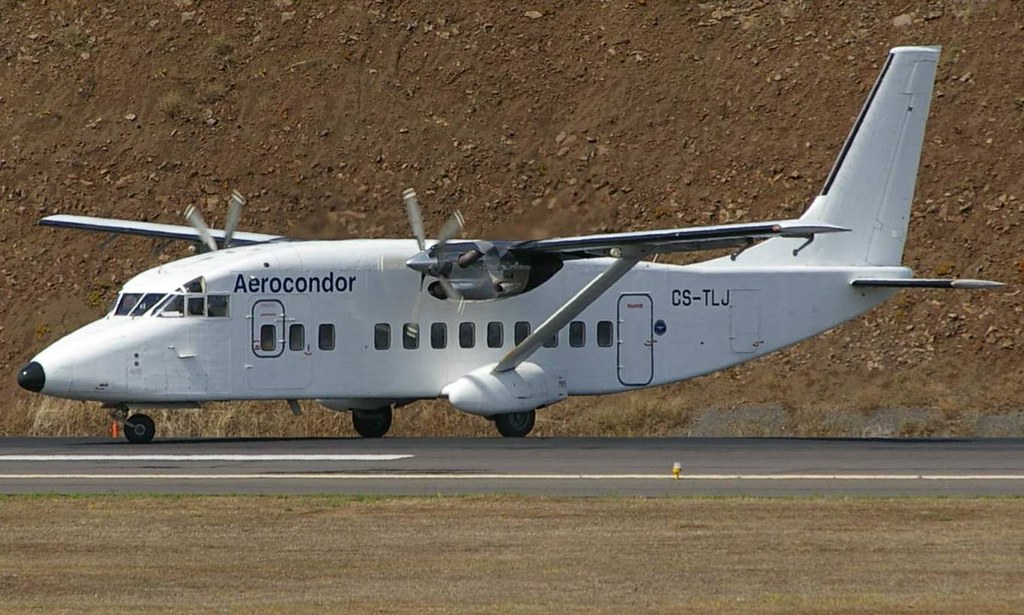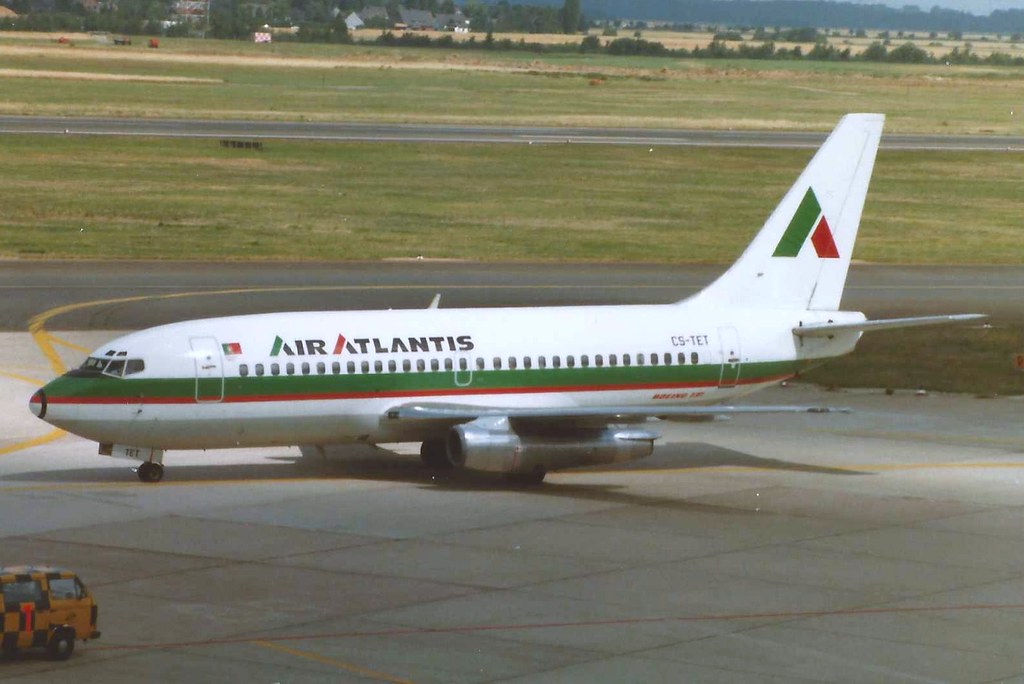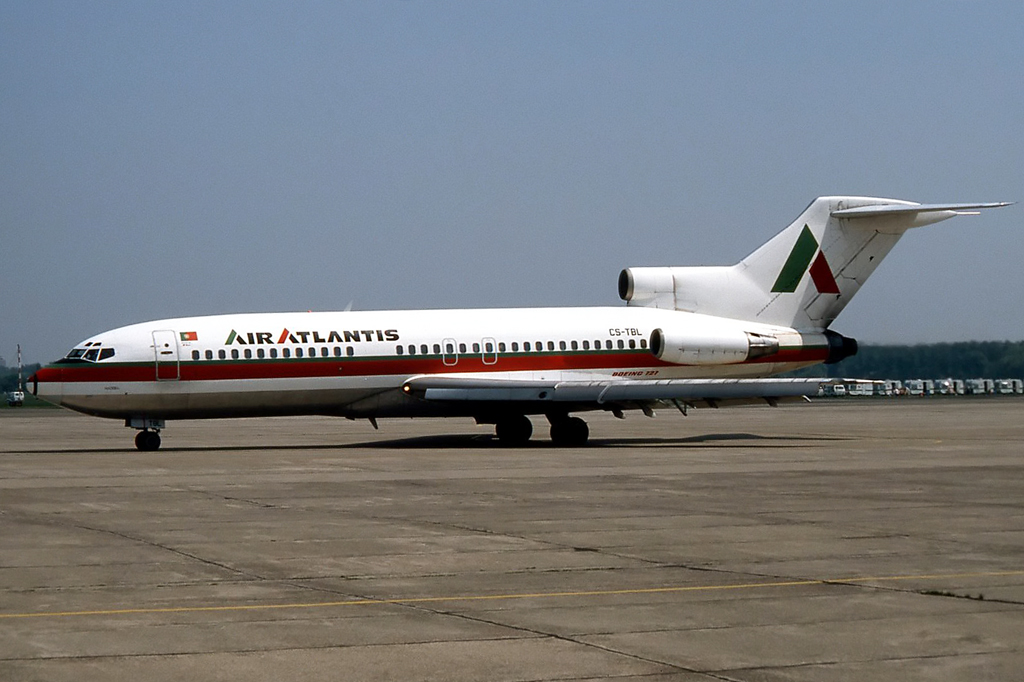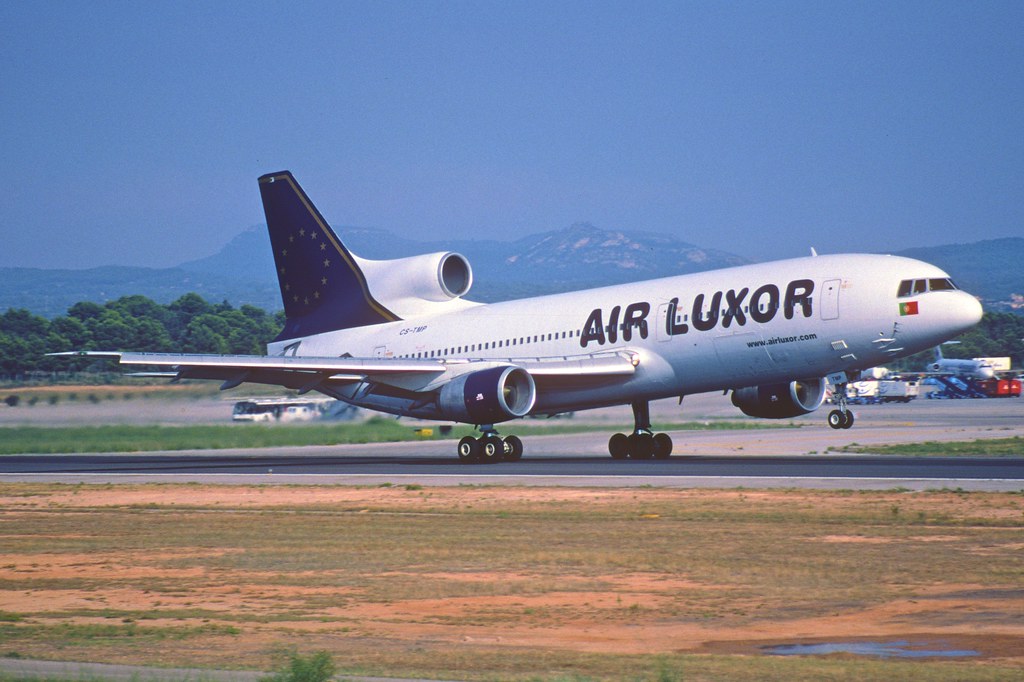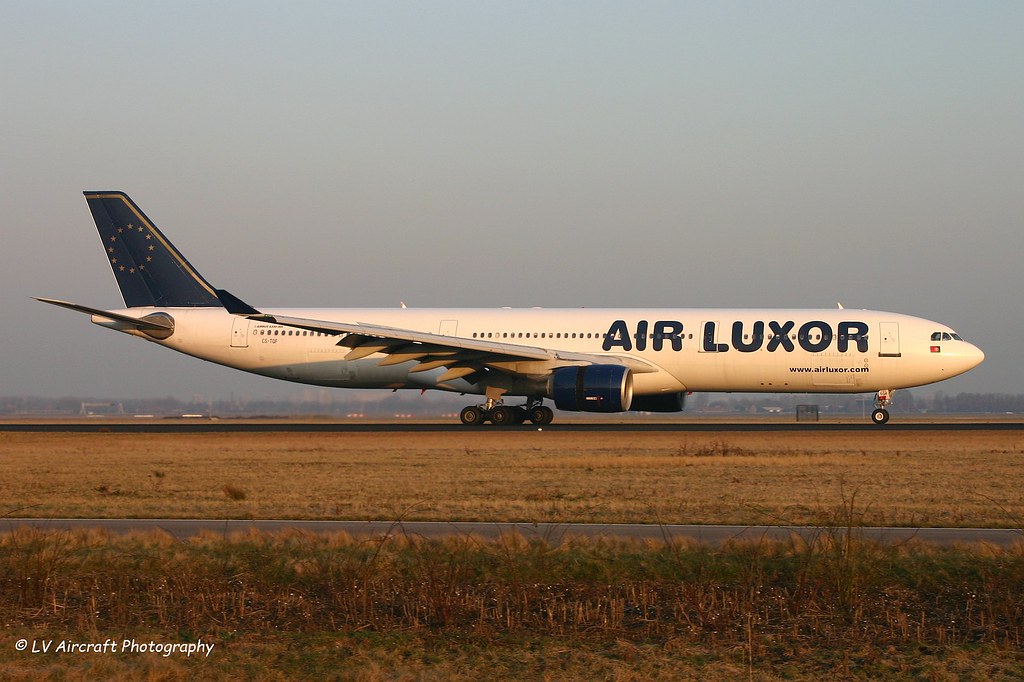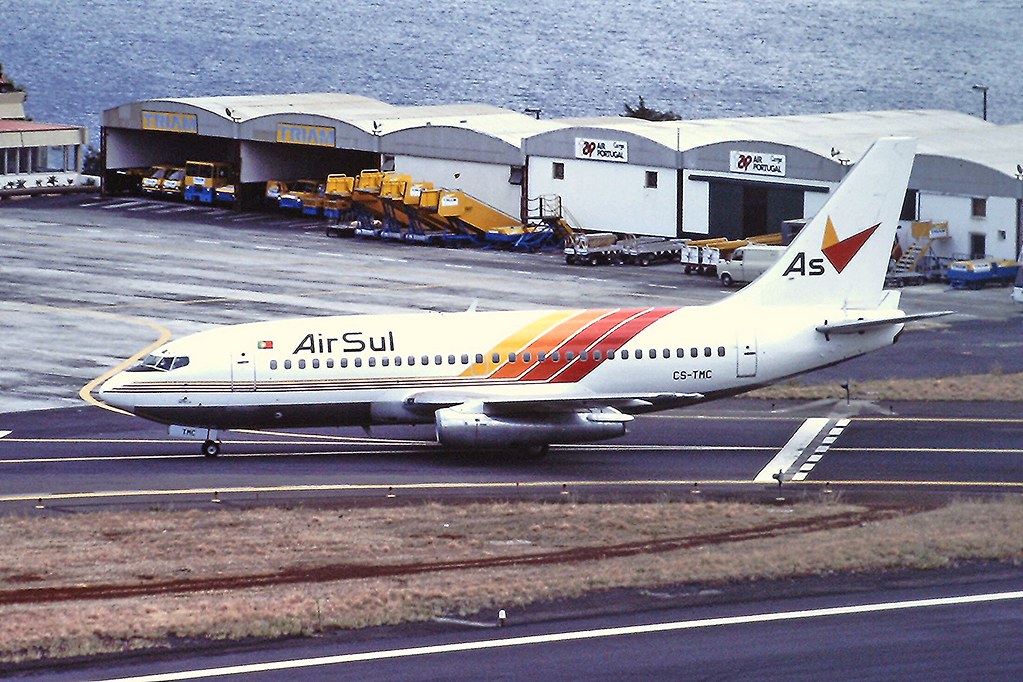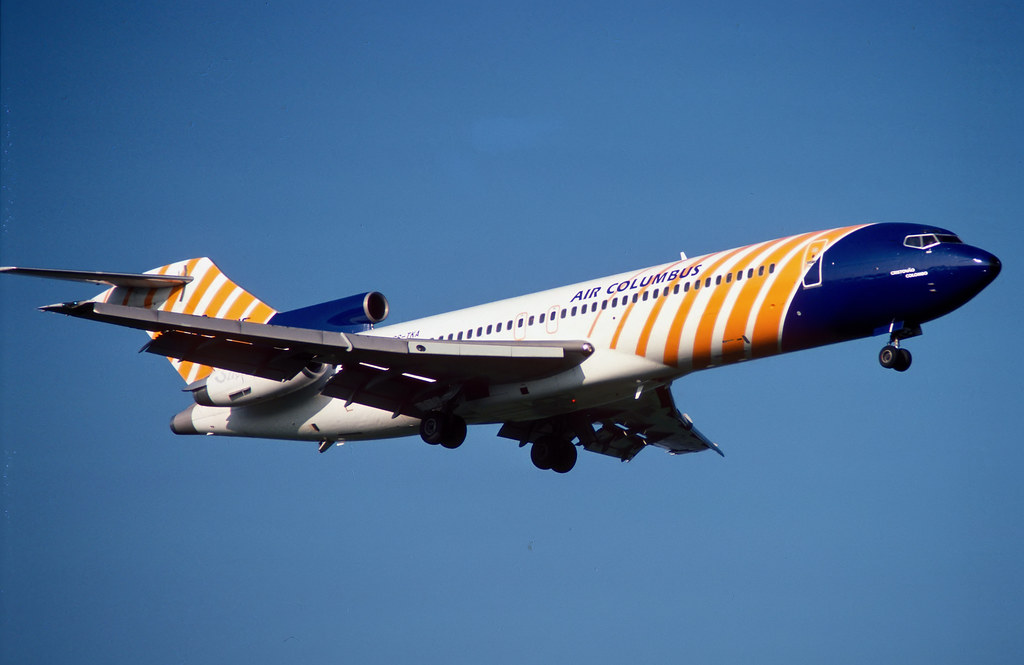In this article, Diogo Monteiro looks back at the airlines from Portugal’s past and their histories.
Portugal is a country of explorers and adventure. The desire for exploration and discovery was something that the Portuguese used throughout their vast history, giving over the centuries great contributions in the field of maritime exploration and navigation. In aviation, this pioneering spirit and expansion was not left out. The example of the air crossing of the South Atlantic carried out by Gago Coutinho and Sacadura Cabral in 1922 is enough to prove that Portugal and the Portuguese have a very rich aeronautical history.
Portugal, while aviation was taking its first steps, was home to distinguished adventurers who risked their luck in the air, future aviators who intended to link the country to the colonies, and to airlines that were born as air transport in Europe flourished during the postwar period.
Here are some of the former Portuguese airlines that have come and gone.
SAP – Serviços Aéreos Portugueses

SAP – Serviços Aéreos Portugueses (Portuguese Air Services), was founded in 1922, and became the first commercial airline operating in Portugal. On that same year, Junkers Lufverkehr A.G, within the scope of its European expansion plan through the creation of regional subsidiaries, started contacts with the Portuguese Air Navigation Company, for the establishment of cooperation in the provision of air services. Junkers would supply aircraft to the airline and in return, would receive part of its shares. Due to various difficulties, including the bankruptcy of Junkers Lufverkehr, this cooperation did not go ahead, as the airline never operated.
It was only on May 19, 1927, that Junkers founded SAP, together with the private partners António Alberto Eça de Queirós, J. Wimmer & Co., Willi Albert Grote and José Vieira da Fonseca. SAP’s initial purpose was to establish air connections to Albania. However, instead of the planned routes to Albania, SAP has established a connecting service between Lisbon,
Madrid and Seville. Air connections with Spain were made jointly with UAE – Unión Aérea Española, another subsidiary of Junkers. UAE operated the flights and SAP provided the ground services in Portugal.
In 1929, due to the merger of UAE with CLASSA, cooperation with SAP was interrupted and services ended. SAP then tried to relaunch the service autonomously. For this, SAP received its only plane, a Junkers F-13 called “Lisbon” with the capacity to carry six passengers, which had been sent to Portugal in 1925. This plane became a pioneer because it was the first civil aircraft registered in Portugal, receiving the registration “C-PAAC”. However, due to the lack of agreements between the Governments of Portugal and Spain regarding air traffic, SAP ended its air operations in 1930. SAP started to operate only as a ground services provider and sales agent for Lufthansa, which became its largest shareholder in 1937. The airline was eventually dissolved shortly after the Second World War.
Aero Portuguesa

The one that would come to be considered the pioneer of commercial aviation, Aero Portuguesa, was founded on June 22, 1934. It was the first airline to provide a regular commercial air service in Portugal. Its main objective was to establish regular air connections for the transport of passengers between Portugal and Morocco and a postal service between Portugal and Brazil, as well as everything that could be related to air navigation. Its first flights were Lisbon-Tangier and
Lisbon-Casablanca started in October 1934, while the mail air service to Brazil started only in January 1936.
The connection between Portugal and Morocco reached a high importance during the Second World War, as Aero Portuguesa became the only airline of a neutral country to be authorized to serve a belligerent territory. This link thus became the only communication the Allies had with North Africa. The route was, among others, used by countless spies and
double agents but also by refugees from Europe seeking asylum in Tangier. In this context, Aero Portuguesa’s connection between Lisbon and Casablanca was immortalized in the film “Casablanca” with Humphrey Bogart and Ingrid Bergman in the final scenes of the movie.
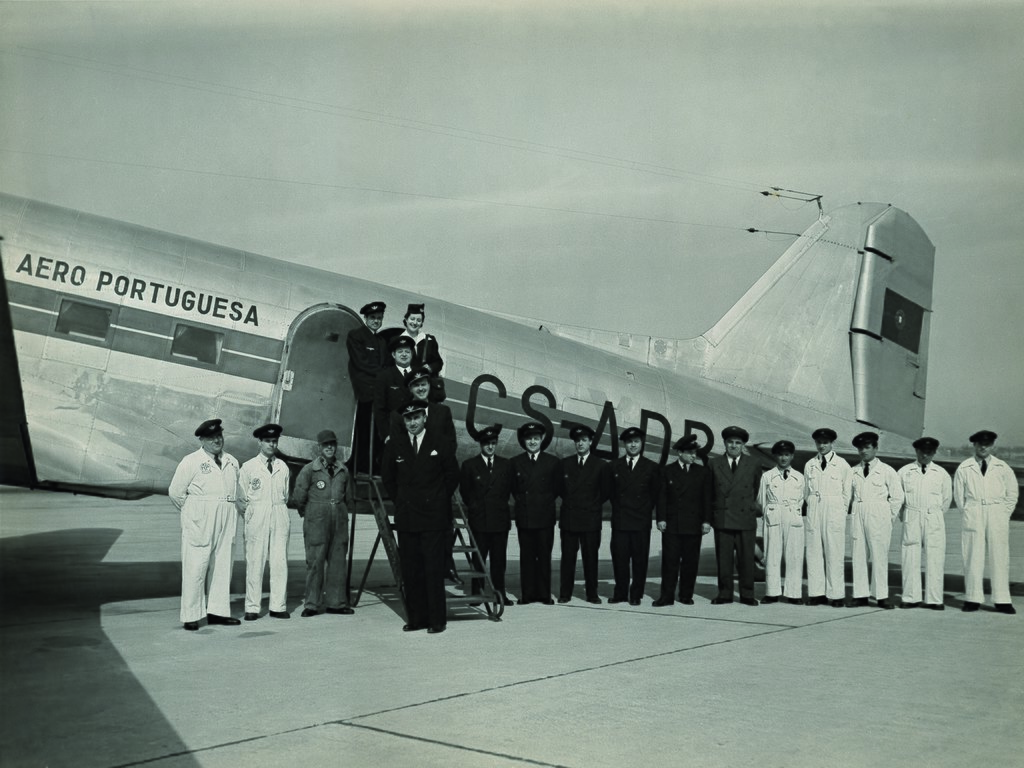
Its capital was 160,000 Escudos (former Portuguese currency before the Euro), with Air France having a stake in the airline of 120,000 Escudos, which made it the major shareholder. During its operational life, Aero Portuguesa operated with the Wibault 283-T, Junkers Ju 52, Fokker F.VII, and Lockheed Lodestar.
Routes were planned from Lisbon to Madrid and Paris, also between Portuguese Guinea and Cape Verde and between Ponta Negra and Luanda, which were never carried out, due to the difficulties caused by the beginning of the World War II.
At the end of the Second World War, Aero Portuguesa re-planned the expansion of its services, both in the scope of international and imperial routes. However, the creation of the Civil Aeronautics Secretariat, and its goal to form a major flag carrier (which would become TAP Air Portugal), impeded this expansion. The airline ended its operations in 1953 with the integration of its services in TAP.
CTA – Companhia de Transportes Aéreos
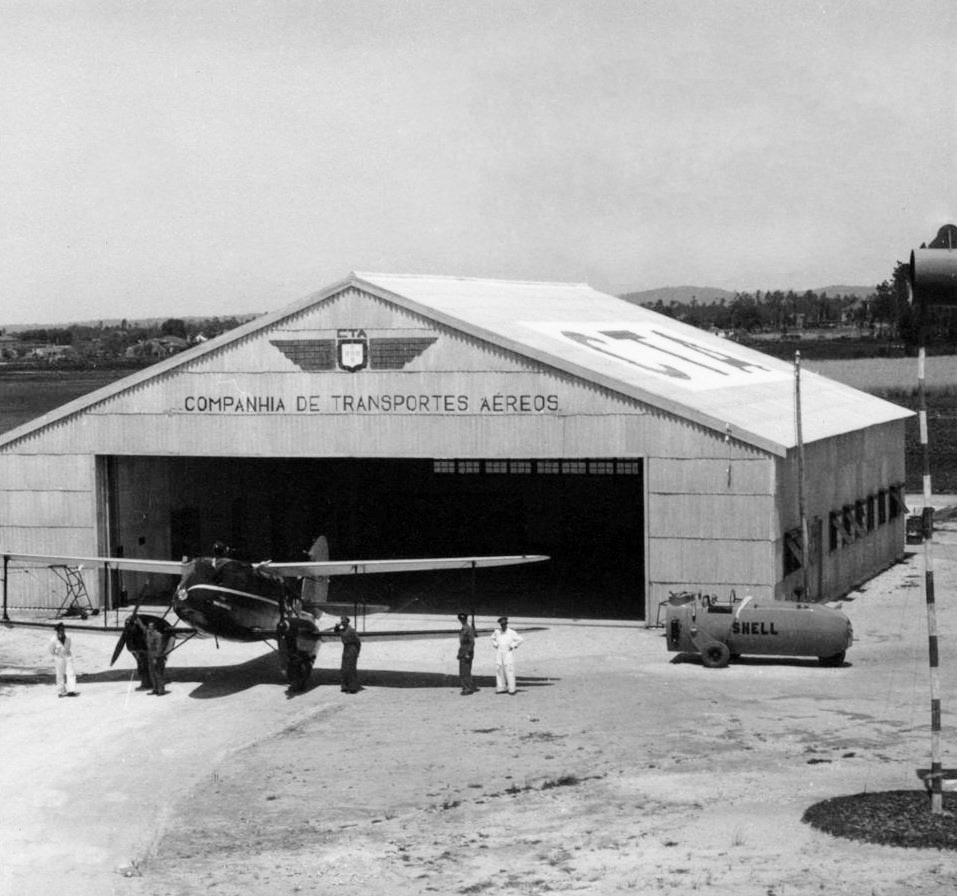
Companhia de Transportes Aéreos was founded on January 20, 1945 under the name “Sociedade Continental de Transportes Aéreos”. Half a year after its foundation, in July 1945, the airline was acquired by the CUF Group and changed its name to CTA – Companhia de Transportes Aéreos (Air Transports Company). The airline’s new share capital included the most illustrious names in Portuguese society at the time, such as António Champalimaud, Carlos Bleck, Manuel de Mello, Fernando Ulrich along with the Sousa Lara Family.
The airline’s initial fleet consisted of a Proctor V and three DeHavilland DH-89 Dragon Rapides. These four airplanes were intended to ensure daily air connections between the cities of Lisbon and Oporto, with the exception of Sunday.
The airline’s inaugural flight took place on December 3, 1945 between Lisbon and Oporto. The flight coincided with the opening of Oporto Airport located in the area of Pedras Rubras. The opening ceremony was attended by the then President of the Portuguese Republic, General Óscar Carmona, as well as the main shareholders and their respective entourages
that flew for the City of Oporto.
Later, during its expansion phase, CTA bought two Douglas C-47As from the USAF. In order to provide logistical and operational support for the new aircraft, CTA builds workshops, warehouses, flight operations offices, radio equipment, flight crew briefing rooms, etc. at Lisbon and Oporto Airports. By December 31, 1946, CTA’s planes had carried 10,900
passengers in 261 flight hours.
CTA’s expansion plan consisted of opening several international routes in 1946, highlighting daily connections to Madrid, along with flights to the Portuguese colonies in Africa. For this expansion, 4 Douglas DC-4 Skymasters as well as some Douglas DC-6s were expected to be purchased. However, all licenses and requests to operate routes requested to the
Portuguese Government were successively refused.
CTA – Companhia de Transportes Aéreos, was liquidated in 1949 after the suspension of flights between Lisbon and Oporto in 1947, as a result of the foundation of TAP on March 14, 1945.
Aerocondor
Aerocondor was founded in 1975 as an air taxi airline and was part of the Aerocondor group of companies. In addition to scheduled domestic flights, the airline also offered tourist flights and ad hoc charter services. In addition, Aerocondor also operated in the fight against wild fires between 1989 and 2007, in cooperation with the Portuguese Fire Department (SNB)
and the Paper Industry Association (CELPA).
Until 2007, 85.15% of the airline was owned by the Portuguese holding company “Aerocondor SGPS”, the other 14.85% were owned by the Spanish company “Gestair”. In March 2007, Aerocondor SGPS sold its shares to Longstock Financial Group. Longstock Financial Group planned to fly in the charter market internationally, and offer ACMI services using the Aerocondor operator certificate. For this purpose, the acquisition of a Boeing 757-200 and two Boeing 767-300ERs was planned for the spring of 2008. In May 2008, Aerocondor ceased operations without the planned business model being realized.
Aerocondor operated a scheduled connection between Madeira Island and Porto Santo until the end of 2006. Aerocondor operated with two ATR 42 (CS-TLR and LY-DOT), Dornier 228 (CS-TGG) and Shorts 360 (CS- TMN, CS-TMH and CS-TLJ).
Air Atlantis
The creation of Air Atlantis dates back to 1983, when the then Minister of Social Equipment, Rosado Correia created a Commission with the aim of studying the feasibility of a charter airline, subsidiary of the national flag carrier (TAP Air Portugal). The following year, a Working Group appointed by TAP’s Management Board studied the feasibility of a future
airline in this sector. This was how on March 8, 1985, progress was made towards the formalization of the deed of Air Atlantis, a subsidiary airline of TAP for non-scheduled flights.
On 1 June 1985, the first flights of this airline took off from Faro using two Boeing 737-200 aircraft (CS-TEM and CS-TEO) and a Boeing 707 (CS-TBA), all of them leased from TAP.
After six months of operation, Air Atlantis ended 1985 with a loss of around 25 million Escudos, having achieved a share of the non-scheduled passenger air transport market of 18.5% (372 504 passengers). In 1986, it was decided to replace the Boeing 737-200 with 2 Boeing 727-100 (CS-TBK and CS-TBL), also belonging to TAP, maintaining the operation of
a Boeing 707 (CS-TBB).
These somewhat old planes and with very high operating costs, led Air Atlantis to opt for its own fleet, thus receiving in 1987 three Boeing 727-200 Advanced (CS-TCH, CS-TCI and CS-TCJ), acquired through FEASI. The three Boeing 737-200s were the first to use Air Atlantis’ own livery. They were equipped with “Space Generator” type chairs for greater passenger comfort, and were also given names in an allusion to the main Portuguese tourist region and the airline’s headquarters: Ponta de Sagres”, “Praia da Rocha” and “Monte Gordo” respectively.
In the following years, fleet changes continued, with the replacement of TAP’s Boeing 727-100 by its own 737-200 leased to Bavaria: (CS-TET and CS-TEU “Porto Santo”) and with the purchase of a B737-300 fleet directly from Boeing to replace the B727-200. With this, at the end of 1988, the airline received the first aircraft of the new Boeing 737 generation, coming directly from the manufacturer (CS-TIF), on a ferry flight from Seattle with a stopover in Montreal, having ordered two more planes at this time, to be delivered during the year 1989.
With a fleet of five aircraft, Air Atlantis carried out 11,245 hours of flight in 1988, connecting Portugal to the main European markets, having carried almost half a million passengers. 1988 was the airline’s golden year in terms of results, with profits reaching 381 000 Escudos, with a total sales volume of 8,800,000,000 Portuguese Escudos, with the airline having 233
employees.
In 1989, the two 737-300 CS-TIG and CS-TIH were received, as well as another 737-300 temporarily leased from the Dutch airline Transavia (CS-TIR). This was the year when the airline’s results turned around, with the beginning of the cycle of losses, due to the increase in fixed costs and also due to the drop in passengers in the airline’s main market, the United
Kingdom.
In 1992, the last two 737-300s were received, from an order of three, placed two years earlier (CS-TII and CS-TIJ). During the summer of 1992, another Boeing 737-200 (CS-TIS) operated as a fleet reinforcement, an airplane that had belonged to Air Sul. At this time, Grupo Pestana, the second largest shareholder of Air Atlantis after TAP, proposed changing the airline’s statutes in order to allow it for regular flights. This intention would be contradicted by TAP, thus causing the Group’s gradual disinterest in the airline.
At the beginning of 1993, the extinction of Air Atlantis was decided by its main shareholder, TAP Air Portugal. However, several consecutive years of increasing losses made the decision irreversible and an Extraordinary General Meeting held on 19 February 1993 confirmed the decision. The 30th of April would be the airline’s last day of operation,
transferring the fleet to TAP.
On May 1st, TAP started operating charter flights again following the demise of Air Atlantis, also ensuring the completion of the entire summer program undertaken by the extinct airline.
LAR – Linhas Aéreas Regionais
LAR – Linhas Aéreas Regionais (Regional Airlines), was an airline created on January 4th, 985 in Oporto. It took its first flight on March 14 of the same year, and was created with the aim of being an effective means of territorial decentralization, having received great support from local City Halls.
After the failed process carried out by TAP with TAP Regional, it was decided to create a project from scratch that included the municipalities of Braga, Bragança, Coimbra, Covilhã, Faro, Portimão, Viseu and Vila Real, public and private companies. TAP contributed with one-third of the share capital for the start-up of the project, with LAR initially having a fleet of three DeHavilland Twin Otter planes and a Beachcraft King Air E90. The conditions were thus met for LAR to begin operations on March 14, 1985, which began to operate the in the Lisbon-Oporto and Lisbon-Faro routes, also including the municipalities of Bragança, Vila Real, Viseu, Covilhã, Coimbra and Portimão, in addition to the Funchal-Porto Santo connection.
After a promising start, financial problems and the specter of bankruptcy soon began. In 1987, a protocol was signed with TAP, its main shareholder, which provides for the transformation of credits and the reduction of its shareholding and total replacement of the fleet with equipment more suited to its operation. This is how the new LAR – Transregional was born, on April 22, 1988, with a new name and a new logo.
LAR receives two Hawker Siddeley 748 “Avro” (carrying 44 passengers), which was joined in 1989 by an Avro from SATA Air Açores and a fourth that operated for a short time. With these airplanes, the Lisbon-Oporto air shuttle was created with an average of 22 daily flights.
On July 3, 1988, the first Funchal-Porto Santo flight took place and in the same year, the airline increased its capital. A memorandum of purchase is signed for the ordering of the new 64-passenger British Aerospace ATP. Thus, on October 26 and December 1988, the first two ATPs arrived, named “Douro” (CS-TGA) and “Tejo” (CS-TGB). The third aircraft of this type arrived in June 1989 (CS-TGC “Guadiana”), providing the airline with an updated fleet suitable for the existing operation.
For the lower density routes on the two regional connections with the Portuguese interior, the first Dornier 228-200 lands in Lisbon on December 3rd, which was joined by a third one in July 1989.
The Iberian Peninsula was one of the airline’s fundamental objectives, which, in addition to having started operations on April 15, 1990, to destinations in Spain such as Malaga, Bilbao, Vigo, Santiago de Compostela and Seville, also connected Badajoz to Madrid and Barcelona, thanks to an agreement signed in 1991 with the Junta da Estremadura. In France, LAR was present in Bordeaux and Toulouse.
The year 1992 marks LAR’s entry into jet operation with the entry into service during the month of March of two British Aerospace 146-200s, with capacity for 99 passengers each (G-BSRV and G-OLCA).
However, the problems at LAR grew, leaving unpaid debts, salaries in arrears and this whole problem reached its peak with the air fare war on the Lisbon-Oporto route between LAR and Portugália Airlines, which definitively mortgaged the airline’s financial recovery aspirations. LAR thus ceased its activity in 1993.
Air Luxor
Air Luxor (IATA: LK ICAO: LXR) was an airline founded in Lisbon in 1988 by the Mirpuri family, initially as an air taxi airline. Flight operations began the following year with two Aero Commanders (500S and 690B) and a Cessna P206, with the airline putting its first jet aircraft, a Cessna 501 Citation I into service in the early 1990s.
In the spring of 1996, Air Luxor’s Director Paulo Mirpuri, through a cooperation with the US Executive Jet Aviation, created the NetJets – Transportes Aéreos division within Air Luxor. In the same year, Air Luxor leased one Cessna 500 Citation and seven Cessna S550 Citation II from the US partner company, which it used on international commercial flights under the
new “NetJets Europe” brand.
In June 1997, Air Luxor leased a Lockheed L-1011-500 Tristar to Air Madeira, which later used it for this same airline and other ones on a wet lease basis, with a second aircraft of the type being incorporated in 1999. In the spring of 2001, two Airbus A320s and two Lockheed L-1011-500s were used on charter flights, as well as on behalf of other airlines through leasing. In May of the same year, Air Luxor receives a Boeing 767-200 (C9-BAF), to operate on behalf of LAM – Mozambique Airlines. In spring 2002, the airline used five Airbus A320s and two Lockheed Tristars on the charter market, as well as on an ACMI basis for other airlines. Air Luxor receives in June 2003 the first Airbus A330: SE-RBF and CSTQF. A third of its kind was added in April 2004.
At the end of its operational life, Air Luxor was in a very weak financial state, which resulted in the cancellation of some routes, such as the case of Lisbon and Oporto to Paris, or from Lisbon to Praia (Cape Verde), in May 2006. In July of that same year, Air Luxor was sold to Longstock Financial Group, a group of Portuguese-Canadian investors. After this process,
only two Airbus A330s remained in the Air Luxor fleet, which were temporarily grounded in September 2006 by lessors due to leasing fees that would not have been paid. This issue has been resolved and Air Luxor is able to fly again until its complete closure in October 2006.
Air Sul
Air Sul was an airline founded in 1989 by private investors in Lisbon. Its operations began in December 1989 with a Boeing 737-200 (CS-TMA), leased from Britannia Airways, with flights first to Switzerland and later to other Western European countries, with the aim of transporting Portuguese emigrants to home in the Holidays Season.
After some negotiations, Air Sul managed to conclude long-term transport contracts with several tour operators in the spring of 1990. For this purpose, two Boeing 737-200s (CS-TMB and CS-TMC) were leased for tourist charter flights.
The airline flew mainly from the Algarve, through Faro Airport, to Great Britain and The Netherlands. In the IATA Summer of 1991, the airline leased two additional Boeing 737-200s from the German airline Hapag-Lloyd (CS-TMD and CS-TME).
Air Sul ran into economic difficulties in the fall of 1991, which led to the airline’s bankruptcy in January 1992.
Air Columbus
Air Columbus (IATA: BO ICAO: CNB), was a Portuguese charter airline founded in 1989 by private investors in Lisbon, headquartered at Madeira Airport.
Air Columbus operations began on October 5, 1989 on the Faro-London (Gatwick) route, with a Boeing 727-200 (CS-TKA), supplied by the Danish airline Sterling Airways, which held a 34% stake in Air Columbus.
The airline received another Boeing 727-200 (CS-TKB) in March 1991 and in March 1992 the fleet was increased with two Boeing 737-300s (CS-TKC and CS-TKD). Its operational organization was divided between the summer period, when Air Columbus mainly used Faro Airport, in the Algarve, as a departure point for tourist charter flights, and the winter period,
when the airline used its aircraft mainly from Madeira Island
In 1993, Air Columbus carried more than 230,000 passengers and performed charter flights from Madeira to Canada for the very first time. In the same year, Sterling Airways filed for bankruptcy, which worsened the financial situation of Air Columbus. The airline’s economic decline continued in July 1993 after Air Columbus lost one of its key customers due to the
bankruptcy of German tour operator MP Travel Line.
As a result, the airline canceled a lease contract for a Boeing 757-200 (G-IEAD) in August 1993, immediately before the delivery of the aircraft, with the 757 already painted in the airline’s colors. The loss of the main German customer led to insufficient utilization of the aircraft and hampered profitable flight operations. Subsequently, in addition to its own
charter flights, the airline increasingly performed ordering services (sub-charters) for other airlines. Air Columbus ceased operations in December 1994 and was liquidated in the spring of 1995.
Luzair
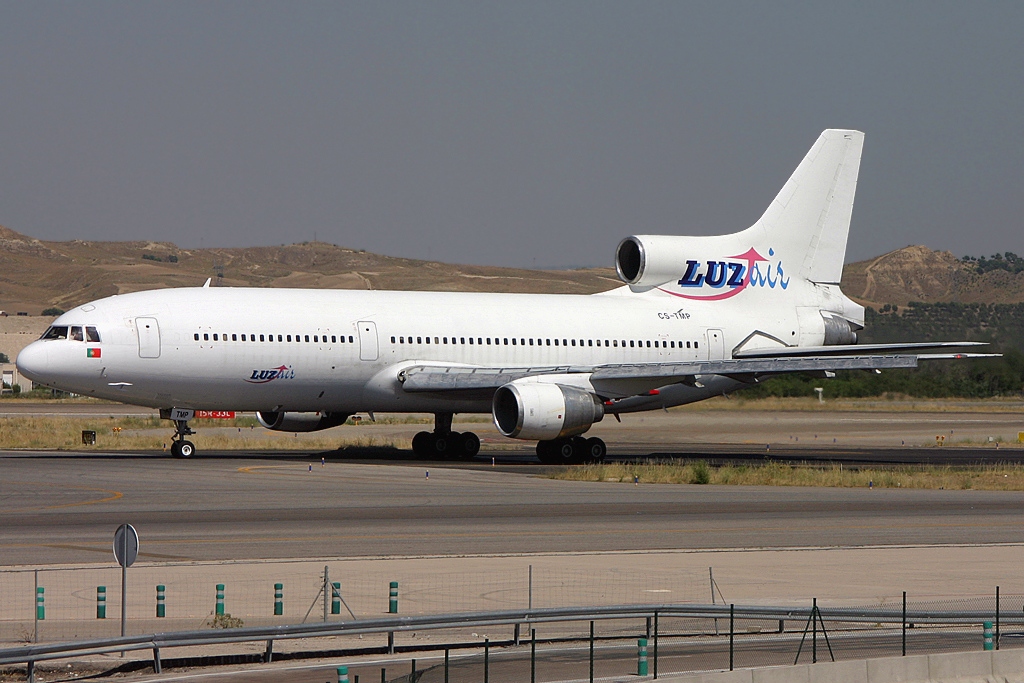
Pedro Aragão, CC BY-SA 3.0 GFDL, via Wikimedia Commons
Luzair was founded in Lisbon in early 1997. Originally Luzair operated as a virtual airline because the airline did not have an Air Operator Certificate. Due to this, Luzair initially contracted Air Luxor to carry out its first charter flights, which were operated by a Short 330 (CS-DBY), under a wet lease regime for the airline from April 1997. In 2000, Luzair decided to terminate flights with its own brand. Subsequently, the airline focused on mediation of transport and ACMI contracts for airlines and took on the role of broker.
As of January 2004, Luzair started again to operate charter and wetlease flights under its own brand with two Lockheed L-1011-500 Tristar leased from Air Luxor. On 15 April 2004, the Portuguese Civil Aviation Authority granted Luzair an Air Operator Certificate, which officially made it an airline.
During one of the wet lease operations with an L-1011, the aircraft suffered damage to its fuselage and was stored in Amsterdam for 3 years until it was repaired and put back into service in July 2007. During this time, the airline leased additional aircraft services to Air Luxor, euroAtlantic Airways and White Airways. As a replacement for the two Tristars, Luzair brought into service a long-term Boeing 767-300ER leasing by GECAS in September 2009, which operated on the ACMI lease to SriLankan Airlines and Conviasa.
The airline ceased operations in January 2011 and it was not possible to carry out a return to operations, which was supposed to take place in the same year with two former Virgin Atlantic Airways Airbus A340-300s.

